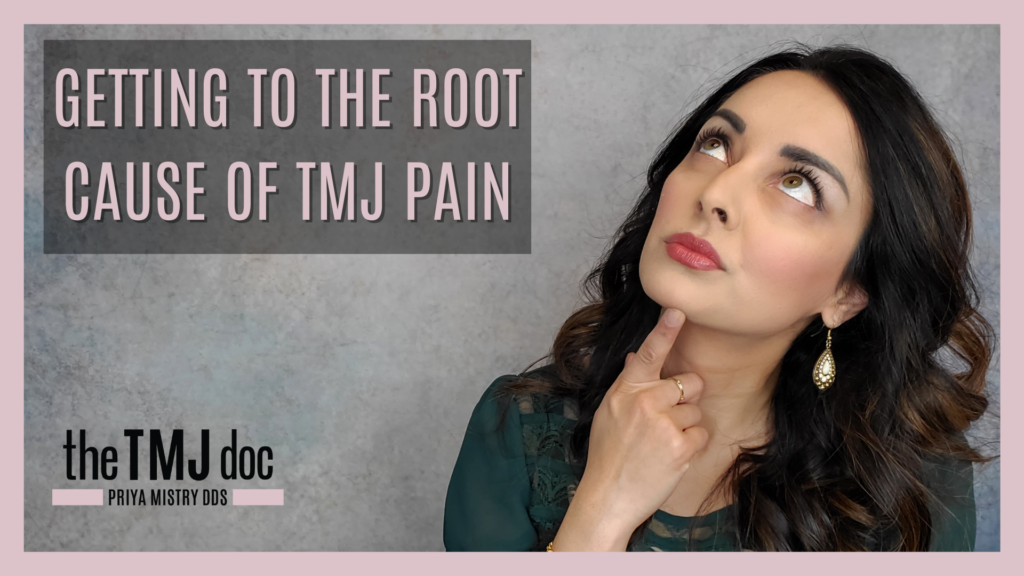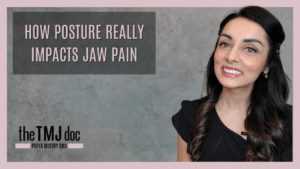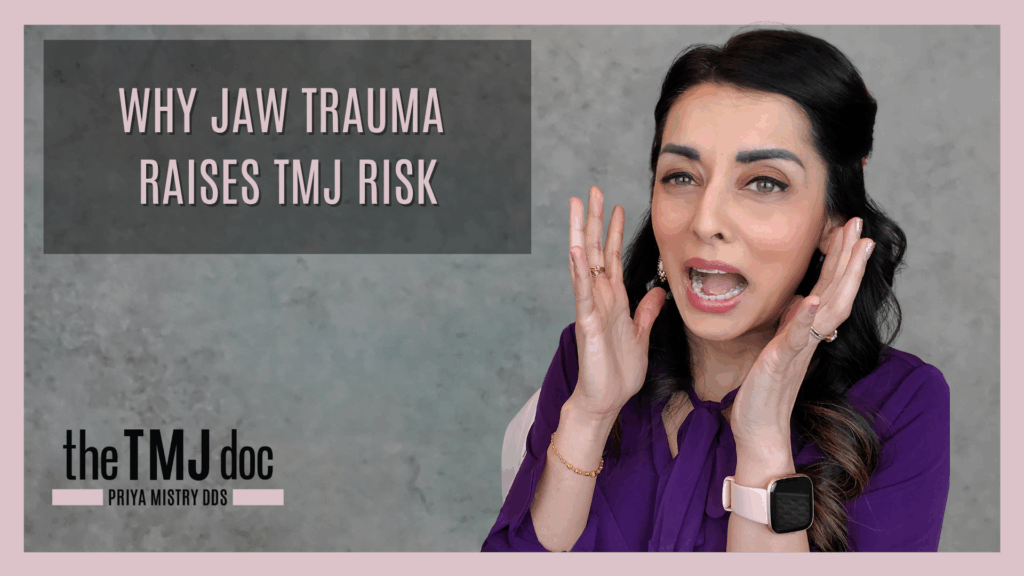Dr. Priya Mistry, known as “The TMJ Doc,” is dedicated to helping patients uncover and address the root causes of temporomandibular joint (TMJ) pain. TMJ disorders (TMJD) are multifaceted conditions that can significantly impact a person’s quality of life. Identifying the underlying cause is the key to developing effective, lasting treatment strategies. This blog delves into the possible origins of TMJ pain and highlights the importance of personalized care.
1. Understanding the Complexity of TMJD
TMJD encompasses a range of conditions affecting the jaw joint, surrounding muscles, and nerves.
Symptoms such as clicking, popping, pain, and restricted jaw movement often arise from:
- Structural Issues: Problems like disc displacement or joint degeneration that impair proper function.
- Muscle Imbalances: Overworked or strained jaw muscles that contribute to discomfort and dysfunction.
- Neurological Factors: Nerve irritation or hypersensitivity that amplifies pain signals.
Since TMJD symptoms can vary widely, it is essential to address the root cause rather than just the surface-level symptoms.
2. Common Root Causes of TMJ Pain
Identifying the root cause of TMJ pain is a critical first step toward effective treatment.
Some of the most common factors include:
- Stress and Jaw Clenching: Emotional stress often leads to habits such as clenching or grinding (bruxism), which place undue pressure on the TMJ.
- Poor Posture: Slouching or forward head posture can strain the jaw and neck muscles, worsening TMJD symptoms.
- Injury or Trauma: Direct trauma to the jaw or repetitive strain injuries can damage the joint or surrounding tissues.
- Dental Issues: An uneven bite or misaligned teeth can force the jaw to work harder, contributing to joint dysfunction.
- Arthritis: Conditions such as osteoarthritis or rheumatoid arthritis can impact the TMJ, leading to stiffness, inflammation, and pain.
3. The Importance of Treating the Root Cause
While temporary fixes may provide short-term relief, addressing the underlying cause of TMJ pain ensures long-term success.
Here’s why it matters:
- Preventing Recurrence: Resolving the root cause helps break the cycle of pain and dysfunction.
- Enhancing Overall Health: TMJD often impacts the neck, shoulders, and teeth. Treating the source improves overall well-being.
- Saving Time and Money: Targeted treatment reduces the need for repeated interventions or medications.
4. How Dr. Mistry Finds the Root Cause
Dr. Priya Mistry employs a comprehensive, personalized approach to diagnose TMJD.
Her process includes:
- Detailed Medical History: Gaining a thorough understanding of a patient’s symptoms, lifestyle, and stress levels.
- Physical Examination: Assessing jaw movement, muscle tension, and posture to identify dysfunction.
- Imaging and Diagnostics: Utilizing advanced tools such as X-rays, MRIs, or CT scans to detect structural issues within the joint.
5. Customized Treatment Plans for Long-Lasting Relief
Once the root cause of TMJ pain is identified, Dr. Mistry develops a tailored treatment plan designed to meet the patient’s unique needs.
Possible solutions include:
- Stress Management Techniques: Strategies to relax the jaw and reduce clenching or grinding.
- Physical Therapy: Exercises to strengthen and stretch the jaw muscles, improving mobility and reducing tension.
- Oral Appliances: Custom-fitted splints or night guards to stabilize the jaw and protect against bruxism.
- Postural Adjustments: Correcting posture to alleviate strain on the TMJ and surrounding muscles.
- Minimally Invasive Procedures: Treatments such as injections or arthrocentesis to address inflammation or joint dysfunction in more severe cases.
Final Thoughts
TMJ pain doesn’t have to be a lifelong struggle. By identifying and addressing the root cause, patients can achieve lasting relief and enjoy a higher quality of life. Dr. Priya Mistry’s dedication to patient care ensure a thorough and compassionate approach to TMJD treatment. If you’re ready to take the first step toward relief, schedule a consultation today and discover how personalized care can make all the difference.







